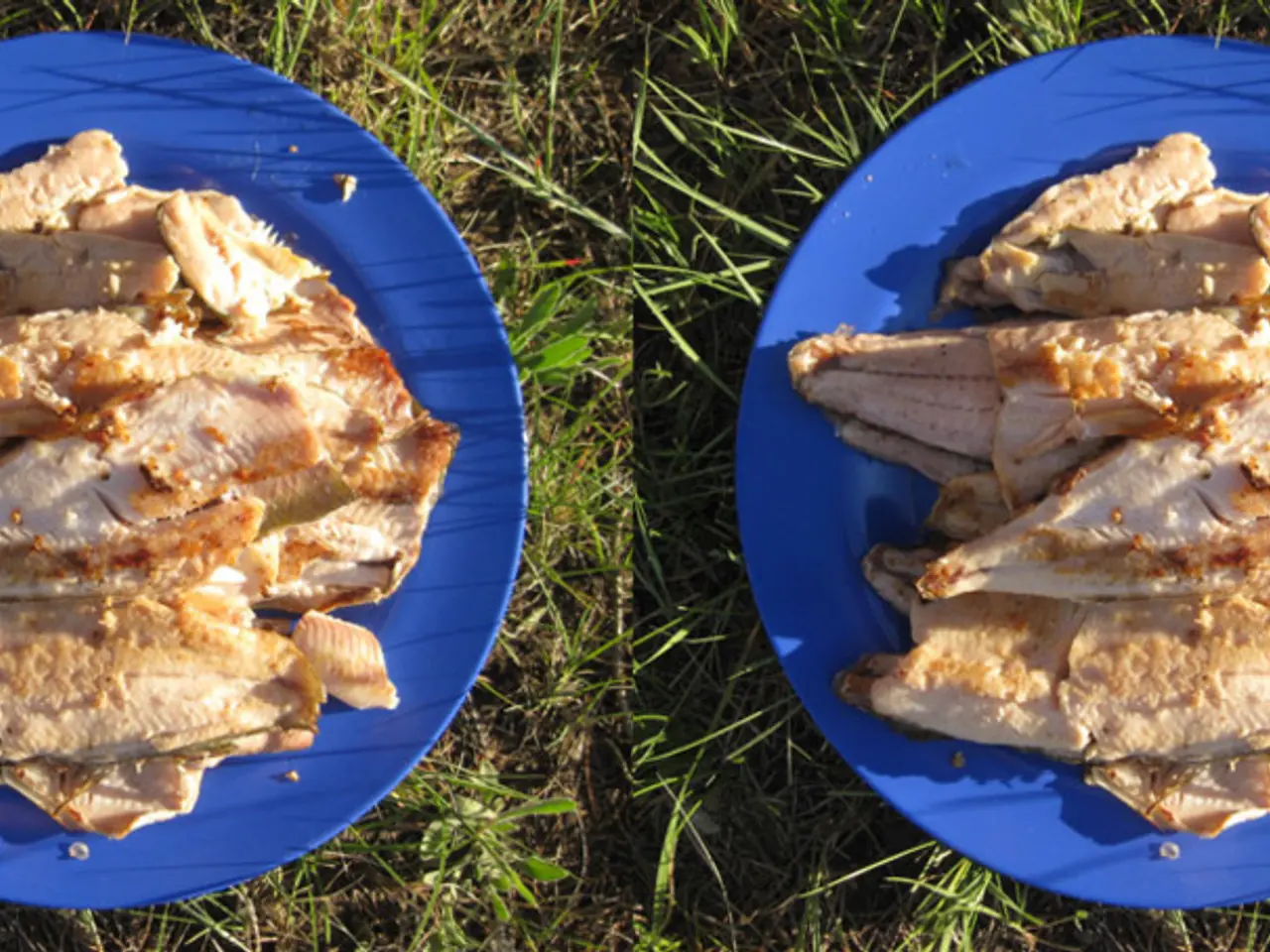Artificial Beef with Authentic Muscle Tissue Advances, Bringing Non-Slaughter Burger a Step Nearer
In a groundbreaking development, scientists at ETH Zurich, led by muscle biologist Ori Bar-Nur, have made significant strides in growing edible, functional lab-grown beef muscle fibers. These fibers closely resemble natural beef, both molecularly and functionally [1][2][3].
The team, working at the Institute of Human Movement Sciences in Zurich, achieved this feat by coaxing bovine cells into forming thick, three-dimensional muscle fibers. The secret lies in a carefully crafted cocktail of three small molecules, acting as signposts that guide the cells through the complex steps of muscle formation [2][3].
This method has enabled the production of thick, contracting muscle fibers that mimic the texture and appearance of real beef, overcoming previous challenges where lab-grown fibers were thin and limp [2][3]. While some colleagues who have tasted the lab-grown beef under approved conditions describe its taste and texture as similar to real meat, regulatory approval for commercial consumption is still pending [1].
The lab-grown beef includes both slow-twitch (endurance) and fast-twitch (powerful, glycolytic) muscle fibers, including some types that have never been produced before in vitro [1]. This makes lab-grown beef, being more complex due to its thicker muscle fibers and fat content, the next frontier in the cultivated meat industry [1].
The muscle fibers need fat for flavor, which is another challenge in the production of lab-grown meat. The team extracted cells from standard beef cuts for their experiments [1].
The researchers used advanced techniques such as bulk and single-cell RNA sequencing, proteomics, and RNA velocity analysis [1]. They created 3D skeletal muscle structures, or tiny steaks of lab-grown meat [1].
The cost of the growth media remains a major challenge in scaling up the production of lab-grown meat [1]. Bar-Nur aims to launch a start-up to make these ethically produced burgers safe and affordable for the market [1].
The findings were published in Advanced Science [1]. In the U.S., the USDA greenlit cultivated chicken for sale in 2023 [1]. Lab-grown chicken is already approved for sale in Singapore [1]. However, regulatory hurdles and public acceptance are other obstacles in bringing lab-grown meat to the market.
References:
[1] Bar-Nur, O., et al. (2023). Functional 3D skeletal muscle constructs with mixed slow-twitch and fast-twitch fibers. Advanced Science.
[2] ETH Zurich. (2023). Lab-grown beef muscle fibers mimic natural beef. ETH Zurich News.
[3] Good Food Institute. (2023). ETH Zurich breakthrough brings lab-grown beef closer to reality. The Good Food Institute News.
- This groundbreaking research at ETH Zurich, spearheaded by muscle biologist Ori Bar-Nur, involves the use of technology to grow edible, functional lab-grown beef muscle fibers that resemble natural beef, striving to revolutionize the food-and-drink industry and the health-and-wellness sector.
- The team's approach to lab-grown beef production involves using a cocktail of three small molecules as signposts for cells, guiding them through the complex process of muscle formation, a method that has yielded thick, contracting muscle fibers with the texture and appearance of real beef.
- The fusion of science, biology, and technology in this research has resulted in the production of lab-grown beef that includes both slow-twitch and fast-twitch muscle fibers, making it a significant step forward for the cultivated meat industry and the future of food-and-drink.
- As part of their research, the scientists at ETH Zurich are also addressing the challenge of adding fat for flavor to their lab-grown beef, and they are sourcing cells from standard beef cuts for their experiments.
- To accomplish their goals, the team has employed advanced techniques such as bulk and single-cell RNA sequencing, proteomics, and RNA velocity analysis, creating realistic 3D skeletal muscle structures or tiny steaks of lab-grown meat.
- Despite the progress in growing lab-grown beef, regulatory approval for commercial consumption is still pending, and the cost of the growth media remains a major challenge in scaling up production of this promising technology.
- In the midst of these obstacles, Bar-Nur is aiming to launch a start-up to make these ethically produced burgers safe and affordable for the market, contributing to a more sustainable lifestyle and fitness-and-exercise routine for consumers.




